I long considered buying a Mamiya TLR, especially after several years of using the Pentacon Six system. Unfortunately, this system proved to be very unreliable and I wanted to replace it with another one with the same 6×6 image frame. I could have bought another TLR but at the same time, I wanted to have a possibility to use different lenses. I gradually started to look closer at Mamiya TLRs — one of the most interesting camera systems, whose lenses and bodies were relatively cheap at that time and its waist-level viewfinder completely suited me. I would even say that any 6×6 camera should only have a waist-level viewfinder.
In 2006, I came across a Mamiya C33 at a very good price in an online “flea market” — not flawless, but in a working condition, albeit without a lens. I decided to first buy the camera itself and a lens for it later. It was even better because it allowed me to think about a lens that would fit my purpose.
Mamiya TLRs vs other TLRs
TLR cameras have lots of advantages over cameras of other types, in particular SLR cameras. However, they also have drawbacks. To make their complete comparison separate research is needed. I would only focus on their advantages over other TLRs, which influenced my choice of Mamiya C33.
If you have no idea about what TLR cameras are, I recommend you to first read an article about them in Wikipedia.
1. The most important advantage is a possibility to change lenses in contrast with other TLR cameras which have built-in lenses.
2. Bellows-type focusing allows one to focus at a very close distance — almost shooting macro — without any additional equipment.
There are special afocal attachments for TLR cameras with fixed lenses exactly for this purpose. It is in fact a set of attachments — one of which should be put on a taking lens, and another one — on a viewing lens.
Among most famous such attachments are Rolleinar close-up lenses #1, #2 and #3. You simply select an attachment depending on the distance you would work with, without an option of choosing an infinity. It is in general not very convenient.
3. Focusing knobs on both sides. Use them depending on how it is more comfortable for you to shoot. Later models have a left focusing knob equipped with a clamp for more precise focusing and for preventing defocusing.
4. More convenient film loading than that of most TLR cameras. Mamiya TLRs have a film spool and a take-up spool in the same plane, as opposed to other TLR cameras, where the film is loaded in the base of the camera and turned through 90 degrees over a roller to pass up to the take-up spool. It is done to make a camera more compact. Thus, it is possible to change film in Mamiya TLRs without removing it from a tripod, as is usually the case with other TLR cameras.
5. Convenient parallax correction during close-up focusing. It is especially true for Mamiya C33 and C330, as well as later models.
Mamiya TLRs and Parallax
All TLR cameras to some extent have issues with parallax. As the distance between the lens and the film increases, parallax also increases and the part on the top of the image frame is cut off on the film. In addition, effective brightness also decreases, and compensation must be made to get the correct exposure of the film.
This problem is solved in TLR cameras with built-in lenses by restricting minimal focusing distance — it is usually about 1m, when parallax doesn’t matter much, and exposure compensation is not significant either.
Meanwhile, Mamiya TLR cameras have bellows-type focusing, which allows really close work. It is very convenient but results in the need for parallax correction and exposure compensation starting from a certain distance to the subject (depending on a lens).
Mamiya released a special accessory — Paramender — which enables correct framing of the image. Here what Mamiya’s manual says:
Fitted between the camera and tripod or other mount, the Paramender permits lowering of the viewfinder lens to picture-taking lens position for complete elimination of parallax while focusing and composing.
It is only possible to use Paramender when shooting from a tripod. As for me, this is not very convenient. The more so because in most cases I prefer handheld shooting. Mamiya has a solution for this as well, but it is not available on all its cameras.
Mamiya C33
For me, the choice of Mamiya C33 was not a hasty decision but it followed quite an in-depth consideration of all its pros and cons. It is better to start getting to know your camera with reading its manual. Then, lots become clear about options for a specific camera model, its convenience, technical characteristics and so on.
The case is that in contrast with earlier models, after the introduction of this model Mamiya TLRs have both automatic parallax correction and exposure compensation. What you need to do is:
- Adjust a parallax correction lever to the focal length index
- While focusing the indicator needle on the ground glass that appears from the top and shows which part of the image on the film is being cut off. The indicator needle points to the exposure index corresponding to the following exposure compensation: ×1.5 for +0.5EV, ×2 for +1EV, ×3 for +1.5EV
Unfortunately, for using automatic parallax correction and exposure compensation with 55mm and 65mm lenses it is necessary to install an additional parallax correction plate to the focusing hood. I don’t know how convenient it is but it is unlikely to allow a swift change of lenses. However, if you don’t do close-ups with these lenses, then you can get by without this plate. But you should always be mindful about observing the distance.
In a nutshell, the indicator needle simultaneously shows the top of the image frame and exposure compensation. It is very simple and, what is most important, convenient!
Mamiya C33 became the first in the Mamiya TLRs line-up to have automatic shutter cocking. I cannot say that it is a must but it is a convenient option, despite the fact that it doesn’t work with the oldest chrome-finishing lenses.
However, during film advance on my camera, when automated shutter cocking should occur, the shutter cocking lever of the body did not fully press on the shutter cocking lever of the lens. As a result, the shutter cocking did not always work automatically. But this issue may easily be fixed by slightly bending the shutter cocking lever on the camera.
It is worth noting that there is a small benefit that a 1/4” tripod mount thread is installed on Mamiya C33. In the subsequent models (Mamiya C330 and C330f) a 3/8” thread mount was used. It is, of course, not a big deal to buy an adapter but it should be found first.
Thus, Mamiya C33 is the base model that is worth considering. And I believe that it is the most successful model out of the entire Mamiya TLRs line-up.
Mamiya-Sekor 105mm F3.5
However strange it may sound, it turned out to be the easiest part to pick a lens. My choice fell on a Mamiya-Sekor 105mm F3.5 for various reasons. First of all, I needed a lens that could fulfil the functions of a standard lens with the field of view of 40-50 degrees. And despite the fact that I mostly shoot portraits, I prefer to stay quite close to a model to maintain a connection, that is why long-focus lenses are not fit for purpose. Besides, I needed quite a fast lens F2.8-3.5 and Mamiya doesn’t have a big variety of such lenses in its line-up, the more so long-focus ones.
Thus, my choice was limited to two lenses — 80mm and 105mm. In order to understand what lens is a better fit, I took my camera, set its parallax correction lever for the 80mm lens and started to “focus” up to the point when a needle appeared on the ground glass in the viewfinder, recording this distance.
Then, having done the same for the 105mm lens, I understood than it allows me to make tighter portraits than the 80mm lens, not taking into account parallax correction. In other words, it was necessary to make parallax correction for the Mamiya-Sekor 105mm F3.5 at a much closer distance than for the 80mm lens.
It is not surprising because the shorter focal length is, the more parallax correction is required for the same shooting distance.
The 105mm lens has the field of view amounting to about 41 degrees — this roughly corresponds with a 58mm lens for 35mm cameras. Overall, in my view, the 105mm lens is one of the most interesting in the entire Mamiya TLR lens line-up. It is also a lens which has undergone most modifications. There are a total of four main types of the Mamiya-Sekor 105mm F3.5 lens — chrome, black, black “D” and black “DS”.
The first two types are Tessar-type lenses, with the main difference being their finish while optics-wise they are identical. The last two types of this lens (“D” and “DS”) are the most interesting. They both have a black finish and look similar to the second type of the 105mm lens but in fact, they are Heliar-type lenses.
However, it should be noted that not all 105mm F3.5 D lenses appear to be of the Heliar-type as some of them are of the Tessar-type. It is possible to distinguish between them by comparing their size. For a more detailed description of all the types of this lens, I recommend you refer to the original manual about Mamiya-Sekor 105mm F3.5 lens.
The depth of field preview (DOF preview) was also added to the 105mm F3.5 DS lens. It is very hard to implement DOF preview in a TLR camera, that is why probably it was made part of only this lens.
In fact, this lens has two diaphragms: one in the taking lens and another one — in the viewing lens. The latter fulfils the function of the DOF preview — you just set a certain aperture value, which you intend to use during shooting and see in the viewfinder how an image would look like.
Unfortunately, I only managed to get hold of the second Tessar-type of this lens. Its bokeh has a typical Tessar style with a light swirl on edges. Meanwhile, when shooting at the aperture of F11-16, it doesn’t make any major difference of what optical formula a lens has, especially when taking images against a plain background. But overall, I was satisfied with this lens.
All black Mamiya-Sekor 105mm F3.5 lenses have a filter thread mount of 46mm. They are somewhat more convenient than 40.5mm because lens filters 46mm are more common. As for a lens hood, I used a cheap round metal hood.
Lens changing
It is quite difficult to produce TLR cameras with interchangeable lenses. But Mamiya managed to solve this problem, making the process of changing a lens on TLR cameras quite simple and convenient, albeit it requires some time to get used to. First, you need to completely retract the bellows into the body by turning the focusing knob and recess the film wind crank into the camera body. Then set the lens changing knob to the “UNLOCK” position. Finally, push the lens catch bracket down and remove the lens.
To mount a lens you need to repeat this sequence of actions in the reverse order. For easier lens mounting, it is recommended to precock the lens shutter with your fingers on the lens that is being mounted so that the shutter coking lever on the body doesn’t hinder the process. However, I didn’t do that. But for some lenses it simply needs to be done. And finally, it is necessary to adjust parallax correction lever to the appropriate focal length index. On the face of it, it may seem to be a complex and time-consuming process. But in fact, it is possible to get used to it quite fast.
During lens changing, the film area is protected from exposing by a special cover. This cover can easily be pressed on with a finger, which will result in this film frame being exposed. That is why one should be particularly careful when transporting a camera with the film inside and lens dismounted.
Mamiya TLR for street photography
In 2007 I went to Rome for a photoshoot, taking the Mamiya C33 as a main camera. I had enough time to not only fulfil the task but also walk around Rome for a couple of days and visit Florence.
Now there is much talk about sharpness, chromatic aberrations and other technical characteristics of lenses. But this all has little to do with Photography — it is either liked or not — and the “quality” of a lens doesn’t affect much. Let me show you a couple of examples, shot on colour film.
In my view, Mamiya C33 is less convenient for street photography as it is somewhat bigger any other TLR camera with a built-in lens. This fact will make you more noticeable. Of course, I do not suggest that every passerby turns round or just pays attention to what you are doing. But I had some cases when people approached me, taking interest in my camera, and asked me to show it and explain what this “thing” is — it looks quite appealing given its vintage and unusual look. But overall, I wasn’t bothered by these questions, on the contrary, I was rather pleased to be able to share my knowledge and experience.
In any case, the lens shutter is very quiet and there are no other noise-producing components of this camera — it will be hard to “detect” you during shooting. Compared to the use of Pentax 67 for street photography, whose mirror flips so noisily that people turn round you will feel yourself much more confident when using Mamiya C33.
Mamiya TLR for close-up portraits
It should be specially noted that I used Mamiya C33 when shooting the portraits of Bernardo Bertolucci and Robertino Loreti, which was my special assignment in Rome.
Overall, I enjoyed using Mamiya C33 for close-up portraits. The main benefit of Mamiya TLRs is bellows-type focusing — you mount a lens and shoot at a scale needed without additional extension tubes. And if you need a tighter portrait, you just come closer and focus again, without being limited by a minimal focusing distance of the lens. It exists in any case but, for instance, the 105mm F3.5 lens is able to cover object size of about 22×22cm at a minimal focusing distance, which is more than enough for close-up portraits. Only the Pentax 67 135mm F4 Macro lens is comparable to this type of shooting in my experience.
Besides, any TLR camera, thanks to the pecularities of its construction, gives a possibility to see if a person winked when a flashlight was triggered or not. There is, unfortunately, no such possibility in SLR cameras and sometimes one misses it a lot.
However, there are also drawbacks. It is very important to remember about parallax correction. During a photoshoot, when you are very focused on working with a model, one can easily fail to pay attention to the indicator needle on the ground glass indicating parallax correction. And you can finish a film roll and only then remember that you should have been composed the top border of the image using the indicator needle position.
I personally had a couple of such cases. I always take an extra roll of film with me and keep it away from the rest, to be used only in case of emergency, if I need to spontaneously photograph something again. And that was a great help in similar situations. I then was shooting this extra material playing close attention to parallax correction, and when I was using the 105mm F3.5 lens for close-up portraits I almost always had to take parallax correction into account.
Another drawback stemming from TLR cameras’ parallax, which is mostly the issue of short-focus lenses, is that one has to come close to to a model when shooting close-up portraits. However, as for me, it is not a problem as such, I enjoy shooting at a close distance as it allows me to better “feel” the process at the shooting set.
However, while there are two lenses, when a model looks into the viewing (top) lens, you get an illusion that the model looks into the camera. But, in fact, the model should look into the taking (lower) lens! And the difference in terms of the direction a person is looking to [the top or lower lenses] during close-up focusing becomes noticeable on images. From time to time, I have had such mistakes as they can be easily forgotten during shooting. But then you expose the film and see that your model in the photo looks as if over you. You can overcome this issue if you use a long-focus lens, 135mm F4.5 or even 180mm F4.5 while shooting at a further distance. In this case there will be no difference at which of two lenses — viewing (top) or taking (lower) — a model should look into.
Mamiya TLR impression summary
Now it can be argued that it would have been easier to buy a TLR camera with a built-in lens. The more so, if I could get by with an F3.5 lens, I could have bought a cheap Japanese TLR camera with a Tessar-type lens. However, it is not exactly so. I mostly described my reasoning above. By that time, I already had some experience of using Meopta Flexaret VI camera. In my view, Mamiya C33 is much easier to use and the potential of the entire Mamiya TLR system is much greater than that of TLR cameras with built-in lenses. Mamiya TLRs have their own drawbacks but I would rather describe them as features which one should be mindful about during a photoshoot. Mamiya TLRs require a more careful approach from a photographer.
All Mamiya TLR lenses have a five-blade aperture, which is also common for lenses with a leaf shutter. Out of the cameras that I have had Yashica Mat 124G and Yashica Electro 35 GL had such aperture. There are lots of cameras with lenses of this type, which is neither good nor bad. Even Carl Zeiss lenses for Hasselblad and Rolleiflex cameras have a five-blade aperture. But in most cases it will make no real difference. Most likely, you simply won’t notice that in some part of the shot small bright spots are pentagonal shaped.
The main reason why I stopped developing the Mamiya TLR system is the absence of fast-speed lenses which I miss a lot. Unfortunately, it is impossible in principle. And albeit it is possible to partly compensate it with a slow shutter speed, which a TLR camera allows during a handheld shot, but it is already harder to compensate its depth of field without increasing focal length.
It should be noted that one of the most famous photographers who used a Mamiya TLR in their work was Diane Arbus.
Is it worth getting one of Mamiya TLR cameras?
Yes, if you like the style of shooting with a TLR camera and you miss an opportunity to change a lens or close-up focusing, or you plan to develop your own system. All this is possible because a Mamiya TLR is a comprehensive system involving several cameras, lenses, viewfinders, grips and other useful accessories.
I could only recommend you to look closer at Mamiya C33/C330. I also had a possibility to shoot using Mamiya C330f several years later. I don’t see any major difference between the cameras.
In Mamiya C330f some parts were replaced with plastic ones and the focusing distance scale has become more convenient to use, a back cover was adopted for both 120 and 220 film types. The latter doesn’t give a major advantage because this film type is hard to get because it has long been missing from the shops and can only be found on eBay. The only benefit of this back cover is a possibility to experiment with shooting on 35mm film in order to make vertical 24x56mm frames.
Also, in later modifications a more convenient waist-level viewfinder hood is used which can be easily folded with two fingers.
Mamiya TLR resources
Below I list links on some additional resources which provide more information about the system:
- Mamiya C series on Camera-wiki and Wikipedia.
- Mamiya TLR interchangeable lenses. It is an interesting and well-known article, which, unfortunately, can no longer be accessed on its original webpage but exists as a pdf-document on various resources. The author describes the optical formulas of Mamiya TLR lenses, analysing where they might have originated.
- The detailed description of chrome series lenses and black series lenses. I have prepared these two pdf-documents for more convenient reading. They are based on a large article Mamiya TLR System Summary which can only be accessed via Wayback Machine. The complete article as a single PDF document is also available there. There possibly cannot exist a more detailed description of the entire Mamiya TLR System with important technical details. Highly recommended for reading.
- I also recommend you to read an article on parallax correction with Paramender. In fact, it is about double exposure but the use of Paramender is described there clearly. The original article is in German.
- Finally, Mamiya C33 Professional Owner’s Manual.
P.S.
Thanks for reading! I would be very grateful if you point out my possible mistakes, add extra information, or just share your experience. Scroll down to the Leave a reply section and share your thoughts about it. Your opinion is important for me. I enjoy answering your questions as the answers may often benefit many other readers and the process of answering allows me to better piece together my existing knowledge and find ideas to improve my articles.


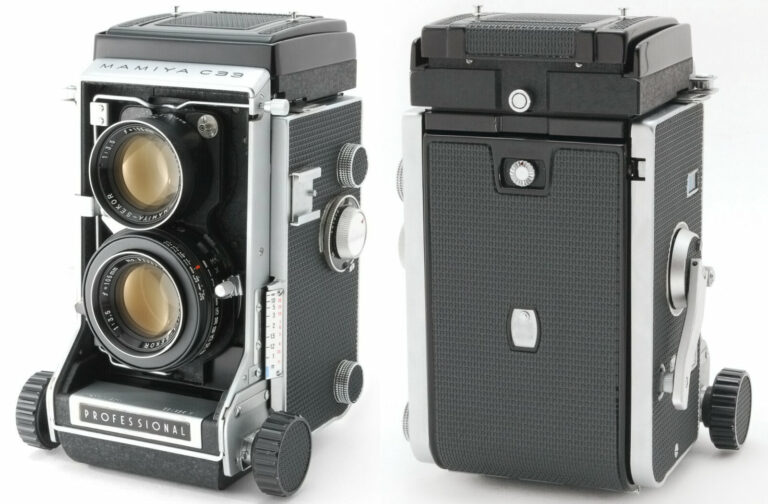


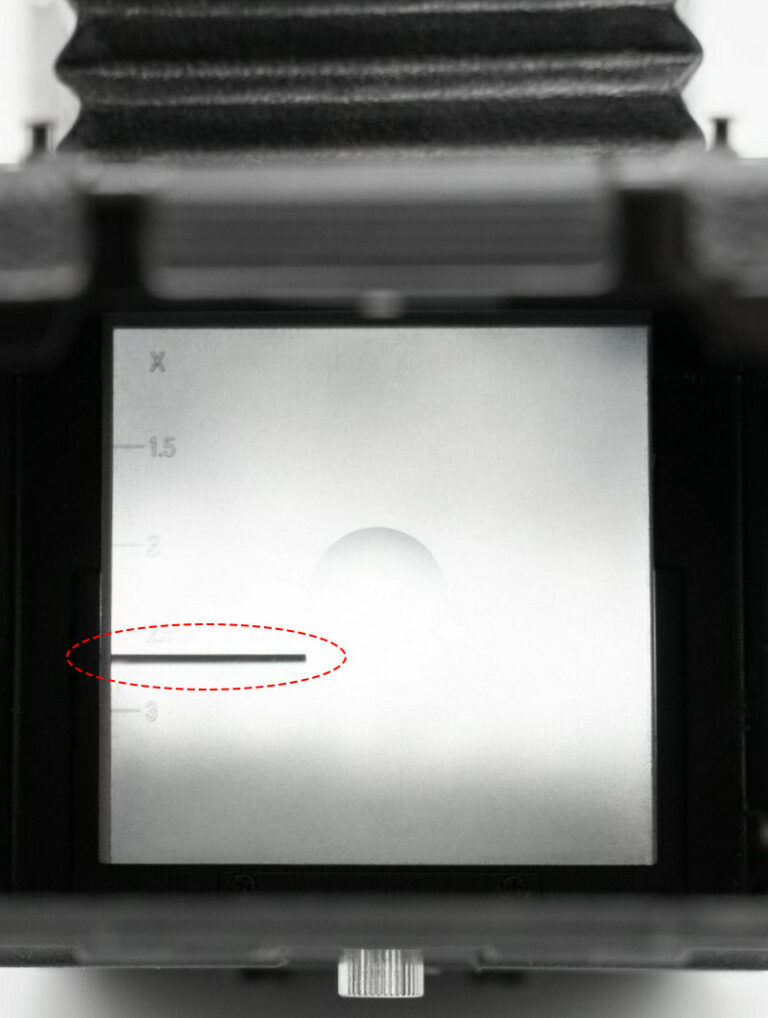



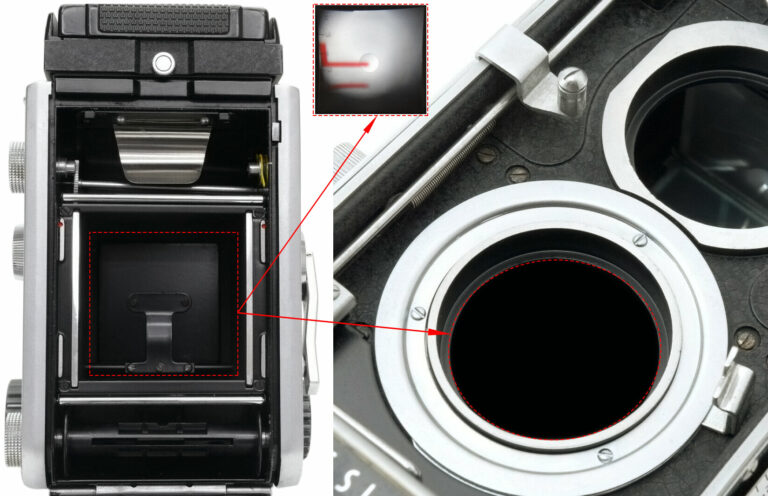
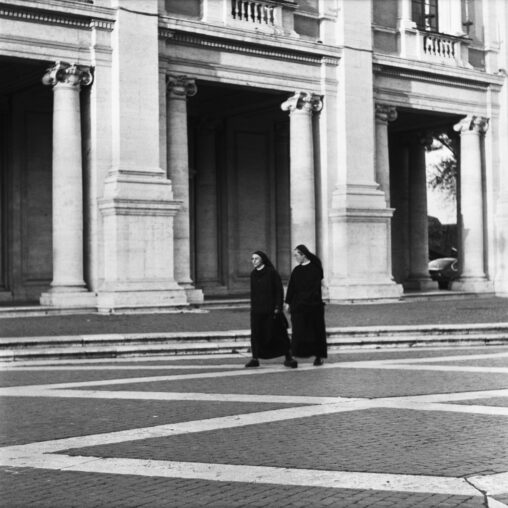






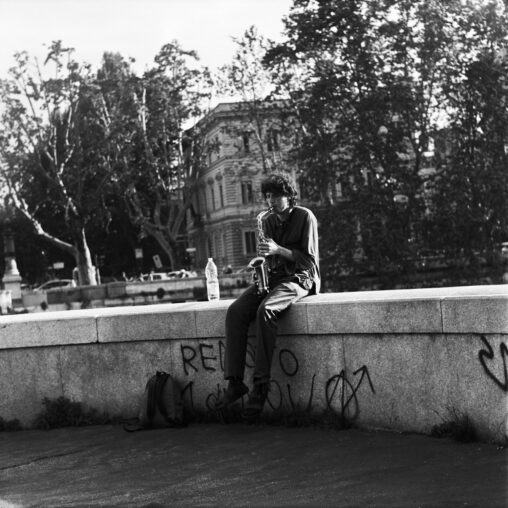
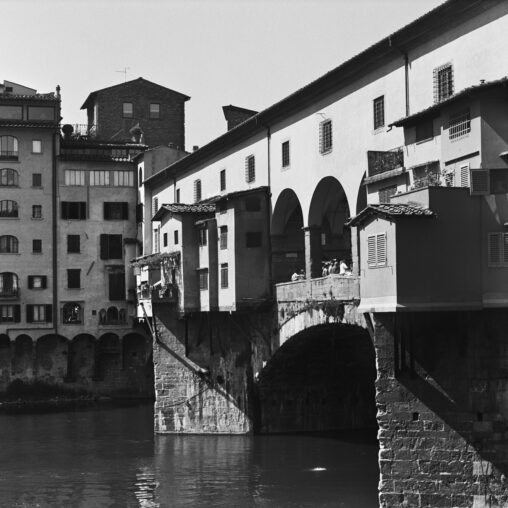



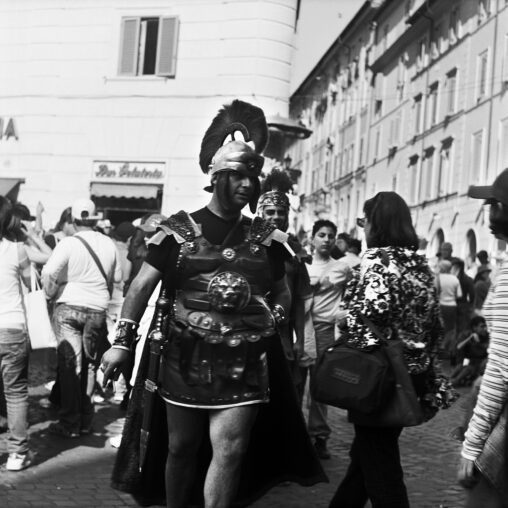
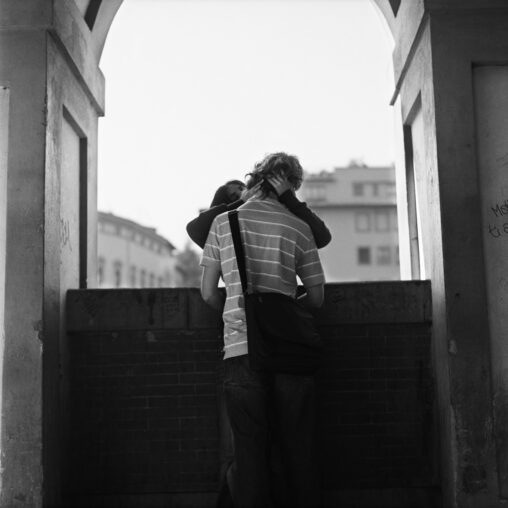
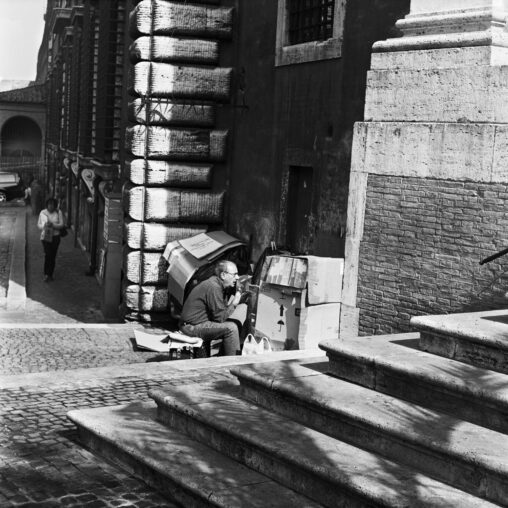
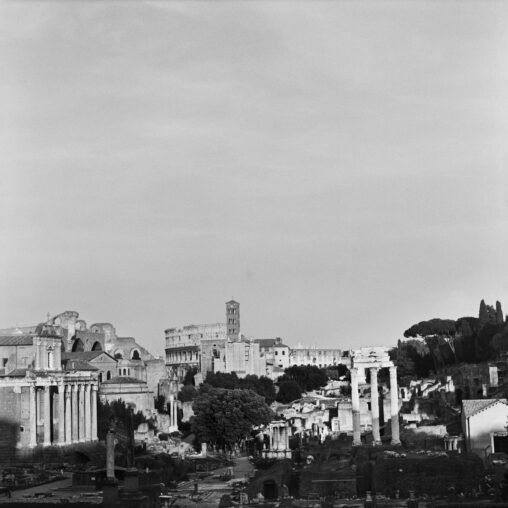



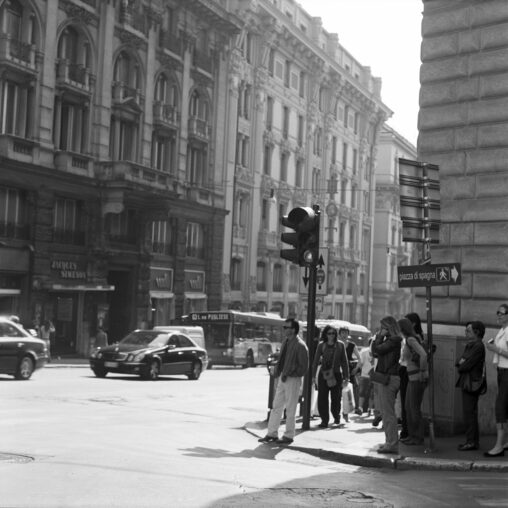

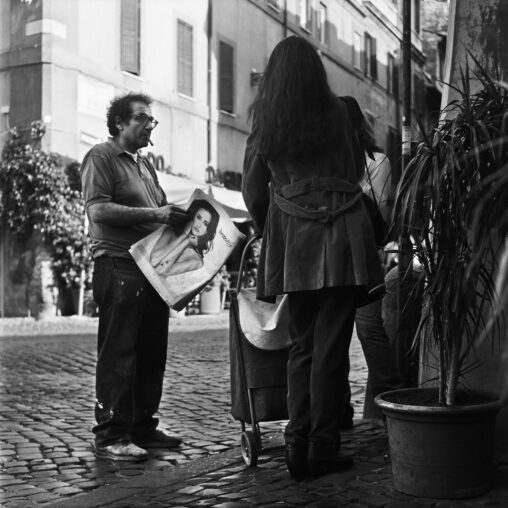
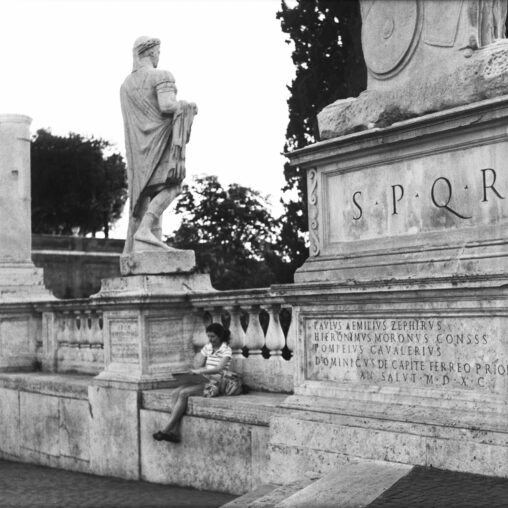
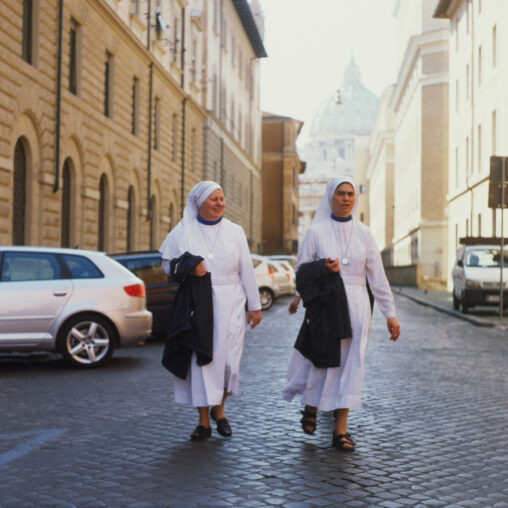

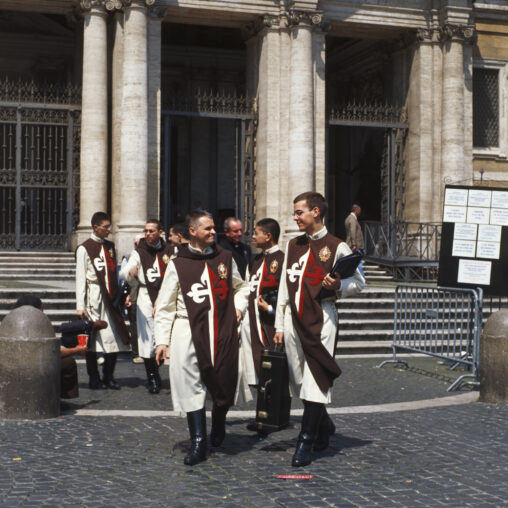


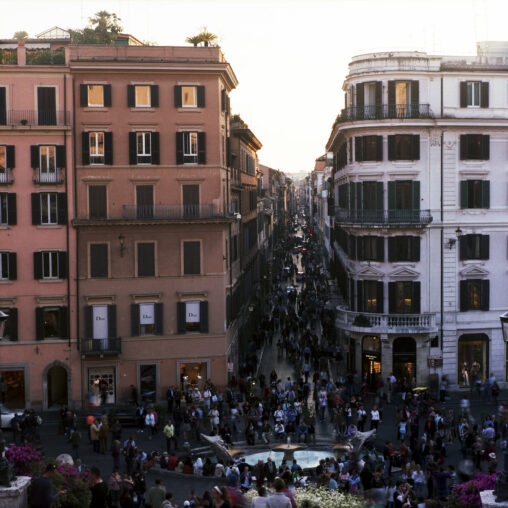
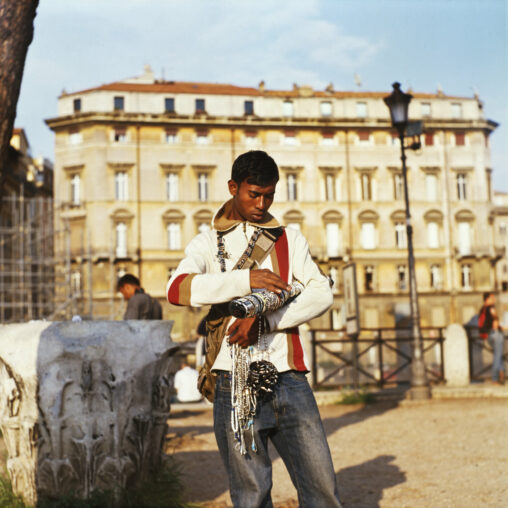




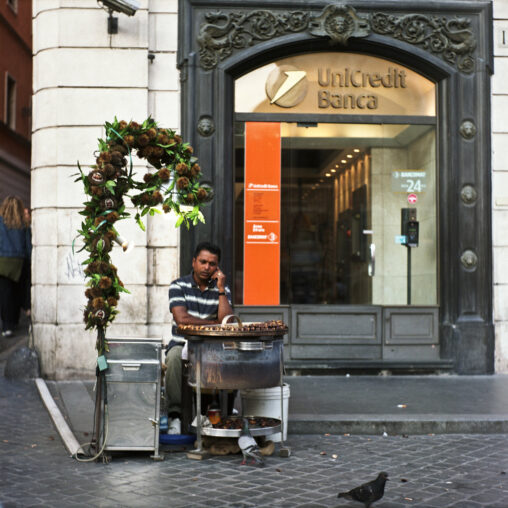
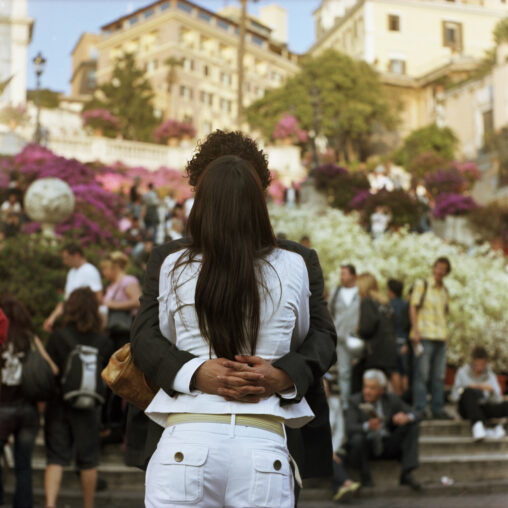

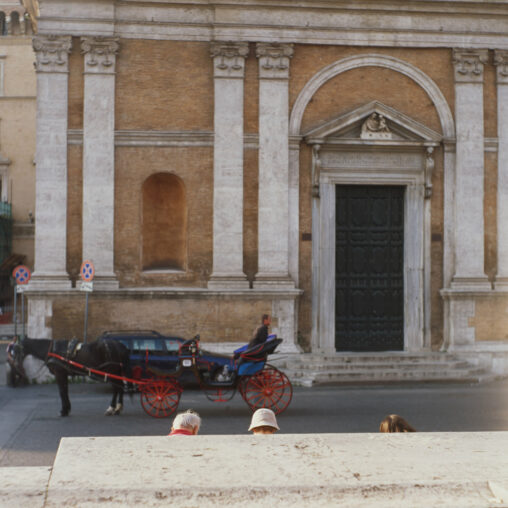
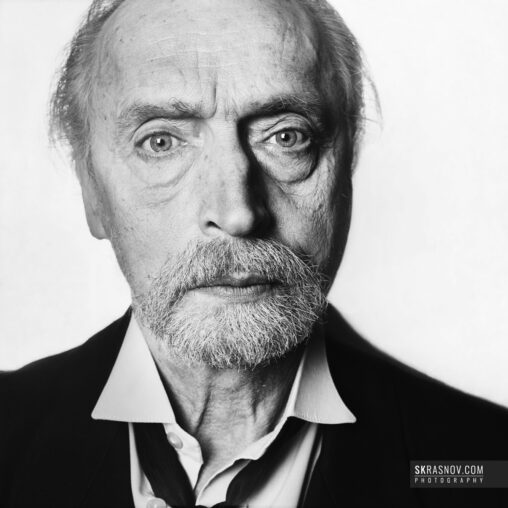
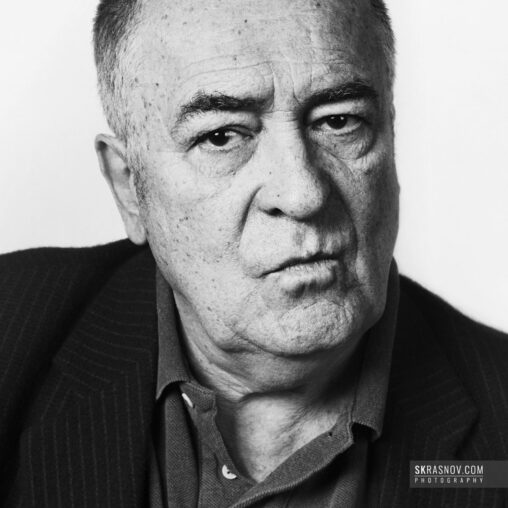

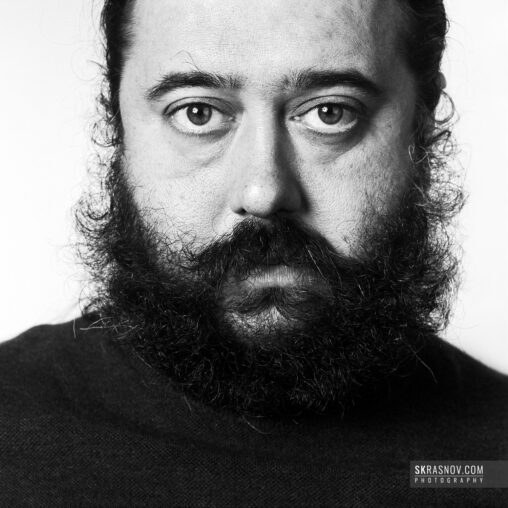
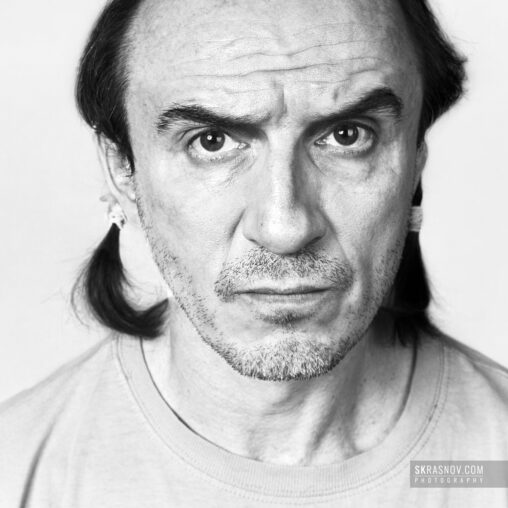
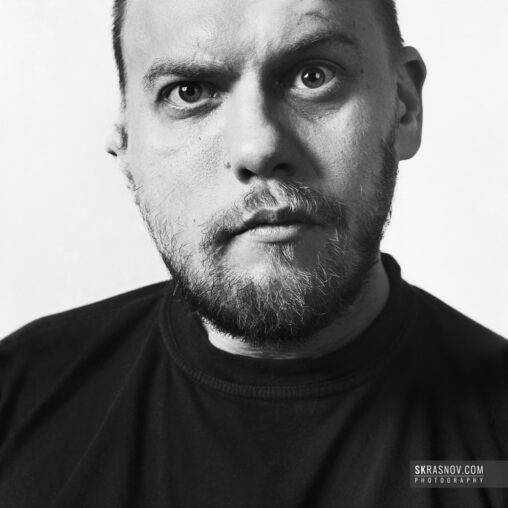
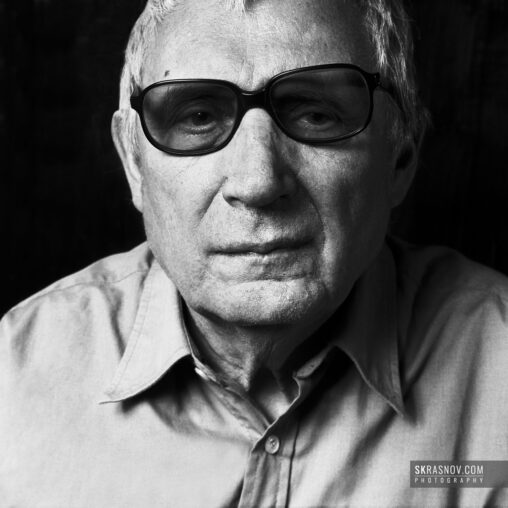

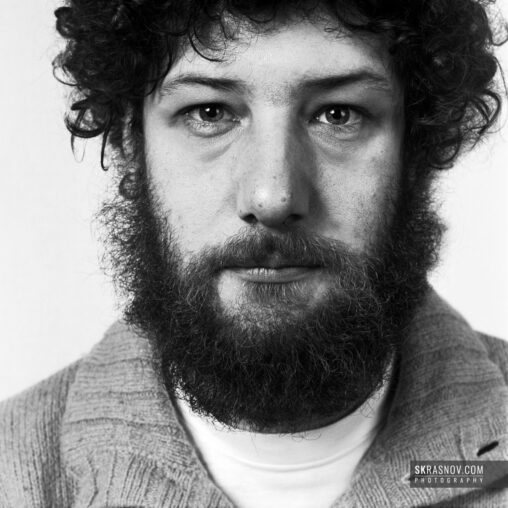

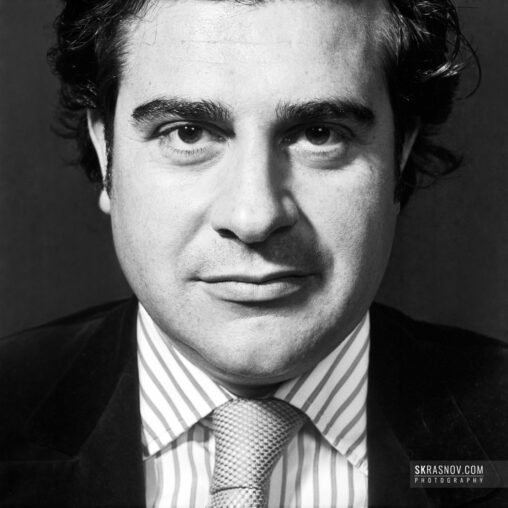





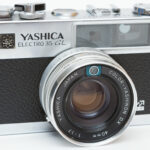
Mike Van Hoecke
Thank you for your conscientious hard work. The 80mm 3.7 lens shutter has a self-timer. I think it is the only Mamiya TLR lens to have this. The 105 DS, if you can get one, is nice for portraits. As I remember, it has a longer bellows travel at the same distance compared to the regular 105s. The chrome 65 is prone to what I believe is some kind of balsam problem, but it can produce a real nice soft focus effect using this problem to its advantage. Since the balsam appears only on parts of the elements, other parts seems to allow sharp lines with a dreamy look similar to good bokeh. That is my best guess. On older Mamiya TLR bodies, the light sealing foam degrades into powder. It can easily be replaced by using adhesive velcro strips cut to a thin size. Be sure and use the fuzzy part. The cheap Mamiya grip works well to help steady the camera for hand-held shots. This is especially important at the 105 and 135mm focal lengths as the bellows extend quite a bit.
The diagonal-leaning flash shoe on the grip looks like a problem until paired with a thin, flat flash that bends for horizontals and verticals. Simply lean the head against the viewfinder casing. As for the 55 lens, I would compare it on-camera with a 65 before purchasing one. It really draws out the composition, which doesn’t seem to work as well for me on square format.
Best to you!
Sasha Krasnov
Hi Mike,
Thank you so much for reading the article and for this extremely valuable addition!
Marcello
Thank you for such an in depth and well written review. It seems like a great camera. Especially the ballow for close up focus makes it very suitable for portraiture! In my previous attempts to make portraits on 120 film I felt sometimes limited by the minimum focussing distance, providing little options for true close up shots. This one is one my wishlist now 🙂
Sasha Krasnov
Thank you Marcell for the feedback on the article. The bellows focusing is the original feature of Mamiya cameras. Later it was also implemented into RB & RZ 67 SLRs. They both allow close focusing without additional extension tubes.
Richard Swan
Thank you for one of the best articles on using the Mamiya TLR in a real world professional assignment. Your portraits are haunting – I looked at the over and over, peering into your subjects souls.
I am curious about what film and scanning process you use?
Best regards,
Richard
Sasha Krasnov
Thank you Richard for reading the article and for the feedback — it’s absolutely important to me. Also, I’m so sorry for the late reply. Considering your question — I used different films with Mamiya C33, but mostly — Ilford Pan F Plus and Ilford FP4 Plus, and developing them in Rodinal.
Joao Leite Ferreira
Dear Sir,
Very good article on the Mamiya TLR. Congratulations !
I had a C330f + 65 + 80 + 180mm + Paramender 2.
I am just recovering from a prostate cancer. Radiotherapy is worse than having a PSA of 21. It has been a big mistake.
I should have let nature took his course. And die old. Now, I am deeply hill because of radiotherapy.
I want to resume forest photography is a brief delay. In Portugal: Sintra and Geres.
The car is gone: my Nissan SRI 2000cc took fire entering Lisbon. Cancer made the rest. I am stucked in my house about 1 year.
My master is Shinzo Maeda. His books are not available any more. There is a Tashen 1993 edition of 3 of his books. Hard to find. He used larger formats. And Ekta (not Velvia !) with no filters.
I had to buy a light tripod. My old Manfotto is pretty heavy for my age.
The pandemic covid19, and the Delta variation, are changing everything.
I hope you will be heathy to keep on writting such good stuffand keep on taking such great portraits.
Sincerely Yours,
J. L. Ferreira
He was (I guess he is already dead) a Great Master.
I dislike Mamiya-Sekor lenses. I think they are bad. You must work at 16, 22
wn
Joao,
hope your journey has continued back to forest;
be well and enjoy the ride;
Joao Leite Ferreira
I like your article very much.
Deep.
Good.
From a pro.
J. L. F.
Sasha Krasnov
Dear Joao Leite,
thank you for visiting my website and for the feedback. I’m so sorry about your disease and keep my fingers crossed for your recovery!
Also, thank you for pointing me out to Shinzo Maeda works, I haven’t seen them before. So, I’m quite impressed by the colors. As for Mamiya-Sekor TLR lenses you are right they require stopping at least to F16 when shooting landscapes. But for taking portraits they are still wonderful.
Keep safe!
Joao Pedro Ferreira
Hi !
Thanks for following me in facebook.
I do not much facebook.
In Portugal it is of a very bad taste to do facebook.
In Portugal facebook is used almost only for football fans….
I am going to follow you, as I follow Steve Guttenberg (The Audiophiliac…).
Maeda was a great photographer.
Not only in landscapes.
I find pictures of fishings boats close to one another in an arbour (in ‘Zoom’ very late magazine french editions) that are wonderfull.
But he always works on very large formats.
No 35mm/24X36 – whatsoever ! …
Keep healthy !
And stay away from Delta Covid19 !
Yours faithfully,
J. L. Ferreira.
Sasha Krasnov
Hi!
Thank you so much! Keep safe! And, I’m sorry for the late reply! I also use large format camera for shooting on self-made dry plates.
Joao Leite Ferreira
What ?
“Self-made dry plates” ?
You do it ?
You a brave man !
Really?
I was about buying a Topcon Horseman + 2 120 backs…
The other option was a Fuji 6X8 really big camera. But everyone I know that use that camera, had problems with the electronics…
Either the Topcon or the Fuji … ….no lens.
I wrote to the seller of the Fuji.
He only had one lens…
The European Community have new rules for import goods outside ECC: you must pay 23% of the price if you want the goods (the lens, the camera, etc).
I think global economics are going in a very bad direction.
For an old photographer (and audiophiliac) like me, it is hell.
Stay healthy, Sasha Krasnov !
Best Regards,
Joao L. Ferreira.
Sasha Krasnov
Yes, I use Fomaspeed liquid emulsion to make dry plates and photographic paper.
Many years ago, I had an idea of having Horseman 970. But then I decided to build the system around Pentax 67.
Joao Ferreira
Pentax 67 ….
That is an idea: I have a 135mm Macro Super Takumar – that I used linked with an adaptor to Nikon F 35mm cameras…
Perhaps it will be the time to go to 6×7 via 67 Pentax ?
Be carefull with the Delta – the new covid19….
J. L. Ferreira.
Sasha Krasnov
Did you mean 6X7 135mm Macro? This a great lens!
Joao Ferreira
I already send my reply.
Be good.
J. L. Ferreira
Andrei
Саша, здравствуйте. Недавно приобрел себе C33 с набором объективов. Не совсем понял на счёт 65мм!?! Его можно использовать без специального стекла для корректировки паралакса??? Это стекло нужно всегда или только если снимать очень близко??? И второе, прочитал про парамендер. Вроде всё понятно про разные дистанции от каждого объектива, но В каких случаях он реально будет нужен, и нужен ли он вообще. Я так понимаю он так же требуется только при съёмки с очень близких расстояний???
Sasha Krasnov
Андрей, привет. Для 65мм объектива надо ставить специальную parallax correction plate. Она предназначена и для 55мм, и для 65мм объективов. Там по одной стороне нанесены поправки экспозиции для объектива 55мм, а по другой стороне для объектива 65мм. Она встречается на еБее конечно, но крайне не часто, да и стоит соответственно. По факту, там ведь просто значения поправок стоят несколько на других позициях. Вы можете сами их определить опытным путем. Я бы лично вам посоветовал поставить селектор объективов в положение 80мм и отснять тестовую пленку, отмечая для себя когда стрелка только-только появляется из-за верхнего края, потом на уровне 1.5х, 2.0х и т.д. И параллельно зарисовать, что вы реально снимали, чтобы не запоминать, либо можно цифровым фотоаппаратом просто снять экран, т.е. запомнить, что вы в реальности видели. В результате вы поймете как соответствует кадрирование по стрелке реально тому, что видит нижний объектив на конкретной дистанции фокусировки. И таким образом приноровиться к стандартному экрану. Либо потом просто из прозрачной пленки вырезать и маркером обозначить. Тут надо помнить, что поскольку объектив более короткофокусный, то фактически отметки должны быть чуть смещены вверх относительно стандартных для объектива 80мм, Фактически граница 1.5х, 2.0х и т.д. наступят несколько раньше для объектива 65мм, и тем более для объектива 55мм. Чем фокус короче тем эффект параллакс существенно раньше наступает.
На счет Парамендера — я бы не советовал связываться. Если вы привыкли снимать все со штатива, то ок, наверное вам нормально будет. Но по мне, он сильно замедляет работу и делает ее просто неудобной. Я имею в виду съемку людей прежде всего. При крупных портретах почти со 100% гарантией вам придется делать поправку на параллакс для объективов 80мм и 105мм. У меня был такой момент, когда я первый раз на нее снимал, крупно-плановые портреты, а потом проявил и обнаружил, что все портреты обрезаны по глаза. В итоге надо просто следить за стрелкой внимательно и все. В случае с 65мм объективом вам скорее всего надо будет корректировать экспозицию на близких дистанциях, когда стрелка будет только подходить к стандартным для объектива 80мм отметкам для коррекции экспозиции, если вы будете по ним ориентироваться. Опять же, надо протестировать. Я бы так и сделал. А камера отличная, хороший выбор. Я до сих пор иной раз жалею, что ее продал, есть масса плюсов по сравнению с моим Пентакс 67.
Alan M D Macpherson
I have recently purchased a C33 and I found your article and links most useful, and I very much enjoyed looking at your photographs. Thank you.
I am looking forward to using the camera.
Sasha Krasnov
Thank you for the feedback. I hope you will enjoy the camera!
Chris Whelan
Another excellent post with tons of useful information and outstanding portraits. I have years of experience shooting TLRs, especially Yashica TLRs like the Yashica-Mat EM and the simple Yashica A. Selecting the right film for the shooting situation and being spot on with my critical focusing has helped me to create some stunning square images that are super sharp and pleasing to the eye.
I’ve just purchased my first Mamiya C33 with the first black 105mm f3.5 lens from a seller in Japan. I know that the Mamiya is a monster compared to my Yashicas but I tend to like using a larger heavier camera anyway. I have a Fujica GW690 6×7 Professional that produces awesome large negatives with exceptional detail so it will be fun to compare my Yashica Mat EM, Fujica, and the C33 together and then blog about it.
I’m glad I’ve found your site as I enjoy your posts. – Chris
Richard Cattafesta
I love the shots in Rome. Excellent portrait shots, too. Very nice to learn about the Mamiya C33 as I am looking at one for myself. Your article was very helpful.
Sasha Krasnov
Thank you so much for visiting my website and for the feedback!
James McEwan
Hi, Sasha,
I started my photographic career at university with a Mamiya C3 and 105mm. Like you It was my entree into the portrait world.
I love the close-up as you do. I have retired after 50 years in newspapers, magazines, and advertising. I am just about to buy a C33 and I expect I will enjoy using the old battleship again.
I loved your pictures of Rome.
Ciao Jimmy McEwan
Sasha Krasnov
Hi James,
Thank you so much for the feedback. I hope you will enjoy C33, it’s a great camera!
james McEwan
Hi Sasha ,
My wife and I will be in Rome during September , Do you have your C33 pictures in a gallery >
I would love to see them in the print .
Cheers ,
Jimmy
Sasha Krasnov
Hi James,
I’m so sorry for the late reply. Unfortunately, I don’t have prints from negatives made with Mamiya C33 anymore excepting some liquid emulsion prints. But I never exposed them in the gallery.
David
Hi Sasha, Quick question. I just bough a C3 and it came with a 105 f3.5 lens. I did a test roll and noticed that every single image was out of focus by a long-shot. I don’t mean ‘soft’. I mean way out of focus. I have been a photographer since the 80’s and this is not my first Mamiya C series but I have never encountered this problem before. I noticed that the serial numbers on both lenses did not match. Both lenses are 105’s. Could it be that one of the lenses was changed and not part of the original pair? Even so, wouldn’t it still focus the same?
Thanks in advance,
David
Sasha Krasnov
Hi David,
I’m so sorry for the late reply. Considering your question about serial numbers — it’s ok, the paired lenses should be of different serial numbers. But one of the lenses might be replaced with the same lens from another pair. Anyway, you have no information about it.
So, I think it’s possible that 1) the viewing or taking lens has been replaced with the same lens taken from another series of 105s; or 2) ground glass may be misaligned or replaced with other one having another thickness.
wn
I am going to shop for the 105 lens today; wanted to read up on it and stumbled upon your most useful article;
now I will be a little wiser on what I am getting.
thanks;
Sasha Krasnov
Thank you so much for reaching my website and for the feedback!
Dev
Vorrei comprare mamiya c…Ma non so quale..se c22 oppure c220 o c330…e quale obbiettivo per stret e ritratti…vivo vicino al mare…Rimini…help me
Sasha Krasnov
I would recommend Mamiya C33 or C330 with a 105mm F3.5 D/DS lens. It is more suitable for taking portraits or an 80mm F2.8 lens, but it is, IMHO, rather intended for street photography. Both lenses of course great for portrait photography.
MWFJ Omaha
Wondering if the original Mamiyaflex “c” (first gen) is the same size as the Mamiyaflex a’s & b’s or larger like the c33 etc…?
Sasha Krasnov
Sorry, I can not compare these cameras, but both Mamiya C33 and C330f are equal being compared in size.
Tom DiCorcia
I have a C2. The C2 looks to be about the same size as the later C-series cameras. They share the same type of film loading and lens interface and these features dictate the size of the camera. I also have an older Mamiyaflex with a fixed (Zuiko) lens and this is similar in size to all other Rolleiflex-style TLRs, with the film loaded in the bottom, to allow a more compact body.